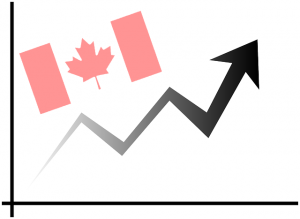 Oil prices have fallen dramatically over the last few months, going from a summertime high of $107.68 to below $50 per barrel today. This change is not only affecting gas prices at the pump – it is also shaking up growth and inflation rates for Canadian provinces, for some more so than others.
Oil prices have fallen dramatically over the last few months, going from a summertime high of $107.68 to below $50 per barrel today. This change is not only affecting gas prices at the pump – it is also shaking up growth and inflation rates for Canadian provinces, for some more so than others.
While this is a currently developing trend, and we don’t have inflation figures newer than November 2014 yet, we can take look at how inflation has been fluctuating among Canadian provinces over the last twelve months and see how those trends have changed in the second half of 2014.
Early Trends of 2014
Oil producing provinces such as Alberta, Saskatchewan and Newfoundland, have in the past had the highest inflation rates, while export dependent provinces such as Quebec, British Columbia and Ontario had much lower inflation rates. High oil prices were helping provinces rich in natural resources, while keeping the exchange rate high and therefore harming exports of production oriented provinces.
Roughly a year ago, the highest inflation rates could be found in Prince Edward Island (3.0%), Newfoundland (2.5%), Saskatchewan (2.3%), and Alberta (2.1%). The lowest inflation rates were recorded by British Columbia (0.0%) and Quebec (0.8%). Over the next few months, through spring and into early summer, the oil producing provinces saw inflation rates increase with Alberta reaching a high of 3.9% in March 2014, Prince Edward Island reaching 3.2% in January 2014, and Saskatchewan almost reaching 3.0% a few times throughout the year.
Meanwhile, British Columbia, Quebec, and Ontario had much lower inflation rates for the first part of the year with inflation rates barely breaking 2%. British Columbia set the record for the lowest inflation rate in Canada with -0.3% in February 2014.
Later Trends in 2014
As the year progressed and oil prices reached a high point in summer and started their decline in the second part of the year, oil producing provinces saw a decline in their inflation rates, while production oriented provinces saw an increase in their inflation rates. Newfoundland, which had consistently posted inflation rates in the mid-2% range for most of the year, ended the 12 month period with a paltry 0.7% in November and a will likely finish the year even lower once the December figures are out. Prince Edward Island, which had inflation rates of over 3% a few times, ended the cycle with 0.1%. Alberta had seen inflation rates of almost 4%, but ended the year at 2%. Saskatchewan recorded its lowest inflation rate of the year in November 2014 with 2.1%.
While the oil producing provinces started the year out strong and ended up much lower, British Columbia ended November with an inflation rate of 1.2% and Quebec ended November with 1.6%. For both provinces this represented a marked improvement over the start of 2014. Ontario, which started the year with inflation rates well below the country average, actually ended November as the province with that highest inflation rate among all Canadian provinces (2.4%).
Potential Future Trends
Oil prices have dropped substantially and are not expected to reach the previous heights again for a while. Alberta currently accounts for 18% of Canada’s growth and is especially hard hit. It is estimated that if oil prices remain below $50 per barrel, Alberta’s growth will be halved this year, and completely evaporate by the end of 2016. British Columbia and Ontario have benefited the most from the drop in oil prices, as lower oil prices generally result in a lower Canadian dollar, which in turn makes products made in BC and Ontario cheaper for foreign buyers.
The Canadian dollar declined by 9.1% over the past year and it is estimated that a $10 drop in the price of a barrel of oil results in a 3 cent drop in the exchange rate. Exports are further helped along by the recovering US economy, which has made substantial gains lately. It is expected that we will see a role-reversal in 2015, as previously strong oil producing provinces will see lower inflation and growth, while previously stagnant provinces with anemic growth will be leading the pack. British Columbia and Ontario are both expected to have inflation rates of 2.5% for 2015.


